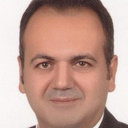Results of vacuum assisted wound closure application.
Maneno muhimu
Kikemikali
In recent past, various methods have been used for wound treatment purpose. In this study, we aimed to compare our results established from the vacuum-assisted wound closure method, which has gained popularity day by day, with the literature. A total of 48 patients, who received vacuum-assisted wound closure treatment in our clinic between 2007and 2010, were included in this study. Etiological distribution of the patients was as follows: 32 traumatic, 6 pressure sore, 9 diabetic, and 1 iliac disarticulation. All cases were evaluated in terms of age, gender, etiology, period of treatment, and size of the wound. In the patients studied, 42 were men (87.5 %) and 6 were women (12.5 %). Mean age of the patients was 39.6 years (11-61 years). All of our traumatic patients suffered from open fracture. After the vacuum-assisted wound closure application, wound size reduced by 28.8 %, while the mean area of the surface of the wound was 94.7 cm(2) (13.7-216.3 cm(2)) on average. After the wounds became ready for surgery, 15 of them were treated with split-thickness grafting, 9 of them were treated with secondary suture, 18 of them were treated with full-thickness grafting, and 6 of them were treated with flap. Average period of the application of vacuum-assisted wound closure was 11.6 days (7-15 days). Results of vacuum-assisted wound closure can be regarded as satisfactory when cases are selected properly. This system has three different effect mechanisms. Firstly, it increases local blood flow on the wound bed. Secondly, cell proliferation is triggered following the mechanic stress. Thirdly, vacuum removes the proteases from the environment which obstructs healing. Therefore, it is intended to prepare alive wound bed which is required for subsequent soft tissue reconstructions.



